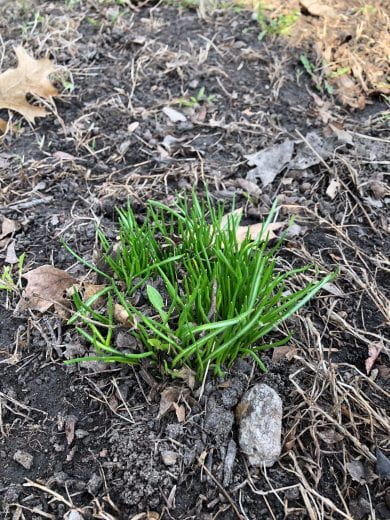By Brooke Garcia (Modified original post written by Dr. Jared Hoyle)
Recognize this weed? This time of year, we are beginning to see a lot of star-of-bethlehem popping up in lawns throughout Manhattan, KS. In my neighborhood, which is one of the oldest areas in Manhattan, it seems to be in every lawn. We struggle with this particular weed every year in our turf, as well as our landscape beds.
It is a very pretty plant with showy, 6-petaled white flowers that have a distinct green stripe underneath. It is a perennial bulb that sometime appears to look like clumps of grass. It can be hard to spot in a freshly-fertilized, green lawn. The green hues blend together. The leaves are linear and smooth, flat in cross-section and have a with midrib.
This plant likes shady and moist areas of the lawn, but I have also seen it grow in the sunniest locations of my lawn too. With the recent moisture and more on the way we are not short of moist areas in the lawn around Manhattan right now.
Although it is has very distinctive characteristics it can be confused with other plants that are commonly found in lawns; crowpoison (Nothoscordum bivalve),spring beauty (Claytonia virginica), wild garlic (Allium vineale) and wild onion (Allium canadense).
If you do not have a lot of this weed in your turf or landscape beds, it can be effective to hand-dig the plant and bulb completely out of the affected area. However, the leaves tear quite easily. Thus, it can be difficult to completely eradicate the entire plant using the hand-removal method.
For chemical control there are couple of options. Both sulfentrazone and carfentrazone have shown to be very effective.
For additional information about Star of Bethlehem, see the recent post written by Ward Upham:
Wild Onion, Wild Garlic, and Star-of-Bethleham
***Mention of trade names or commercial products in this article is solely for identification purposes and does not imply recommendation or endorsement, nor is criticism implied of similar products not mentioned by Kansas State University.***

